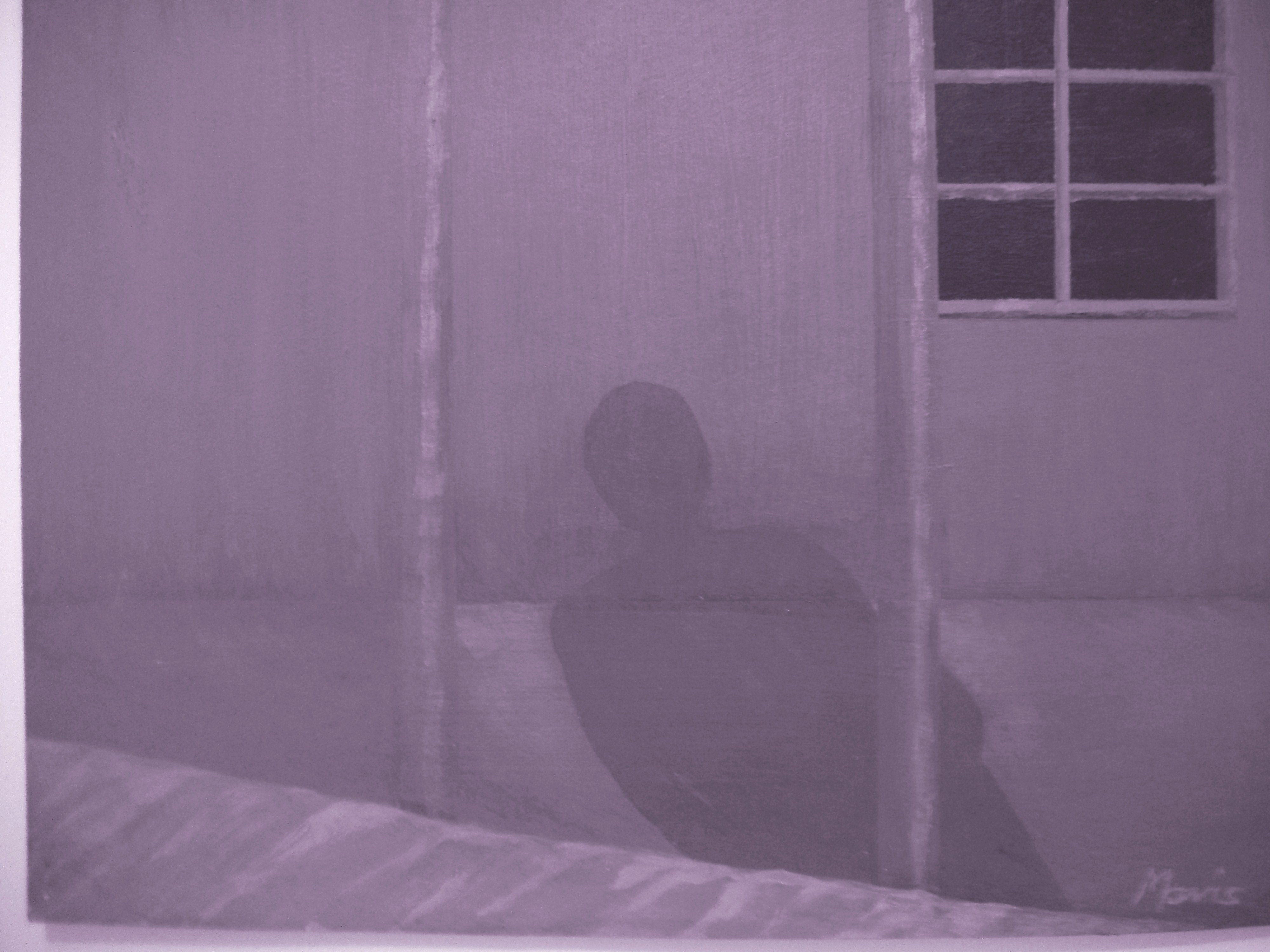

The Polio Experience
speech for Rotaract Banquet October 2011
Mr chairman, Ladies & Gentlemen
I am the face of polio in North America.
Tonight I'll try to help you understand the experience of Polio and postpolio syndrome and I'll say a few words about polio eradication
.
Polio is a nasty disease caused by a virus. If you haven't had polio vaccine and are exposed to the polio virus you may not have any symptoms for a couple of weeks. Even then you may have only a mild, flu-like illness. but if the virus gets into your nervous system, it causes pain, fever and paralysis.
What was it like to have paralytic polio? I was only 1.5 years old so I don't actually remember any details of my polio experience. Every person is different so every polio experience was different. Some even maintained a sense of humour.
Polio survivor Michael B wrote about his first night in hospital . The nurse asked “Any pain?” He responded “No, thank you”
Neil Young (5) had polio in the Ontario epidemic of 1951. “Helpless” the song you just heard was inspired by Neil's childhood experience with polio. Joni Mitchell sings backup. She was 8 when she (like me) was among the 1,205 reported cases of polio in Saskatchewan in 1952 ( There were 90 deaths)
Helpless (live at the Last Waltz concert, 1976 with "The Band") by Neil Young
Back-up vocals by Joni Mitchell
There is a town in north Ontario,(Neil contracted polio in the 1951 epidemic in Ontario)
With dream comfort memory to spare,
And in my mind I still need a place to go,
All my changes (polio) were there.
I painted this from my feelings about my polio experience.
 It has both windows and shadows.
Blue, blue windows (lying in bed paralyzed windows were our only connection to the outside world) behind the stars,
Yellow moon on the rise,
Big birds flying across the sky,
Throwing shadows (fear, pain & the unknown) on our eyes.
Leave us (spoken ?)
Helpless, helpless, helpless (how it feels to be paralyzed with polio)
Baby can you hear me now?
The chains are locked and tied across the door,(Isolation ward)
Baby, sing with me somehow.
Blue, blue windows behind the stars,
Yellow moon on the rise,
Big birds flying across the sky,
Throwing shadows on our eyes.
Leave us (spoken)
Helpless, helpless, helpless.(how it feels to be paralyzed with polio)
Helpless, helpless, helpless.
Helpless, helpless, helpless.
Helpless, helpless, helpless.
I wondered if the song was too long for this presentation but the polio experience lasted not minutes ,or hours or days but weeks , months or even years..
It has both windows and shadows.
Blue, blue windows (lying in bed paralyzed windows were our only connection to the outside world) behind the stars,
Yellow moon on the rise,
Big birds flying across the sky,
Throwing shadows (fear, pain & the unknown) on our eyes.
Leave us (spoken ?)
Helpless, helpless, helpless (how it feels to be paralyzed with polio)
Baby can you hear me now?
The chains are locked and tied across the door,(Isolation ward)
Baby, sing with me somehow.
Blue, blue windows behind the stars,
Yellow moon on the rise,
Big birds flying across the sky,
Throwing shadows on our eyes.
Leave us (spoken)
Helpless, helpless, helpless.(how it feels to be paralyzed with polio)
Helpless, helpless, helpless.
Helpless, helpless, helpless.
Helpless, helpless, helpless.
I wondered if the song was too long for this presentation but the polio experience lasted not minutes ,or hours or days but weeks , months or even years..For more information see:
‘Crippled with nerves’: popular music and polio, with particular reference to Ian Dury by GEORGE MCKAY (page 350)
http://usir.salford.ac.uk/2372/1/displayFulltext.pdf
C.J. Rutty, "Helpless: The 1951 Ontario Polio Outbreak; The Neil Young Case"
http://www.healthheritageresearch.com/Rutty-Polio51-Mirror8903.pdf
Saskatchewan response to Polio http://www.wdm.ca/skteacherguide/WDMResearch/Polio_TeacherGuide.pdf
As you lie helpless with polio, your nerves and muscle die. By the 1950s, there were rehabilitation programs that helped polio survivors to get their function back. Because there was a stigma attached to having polio, survivors worked very hard to appear normal.
Imagine your house being invaded by mice, Mice that nibble away at the wiring destroying some wires and damaging others. You finally get rid of the mice but many areas of your home no longer have enough electrical connections. To solve the problem, you run poor quality extension cords from the outlets that still work (though they may be damaged) to areas that are “dark”. This is how with exercise and hard work polio survivors used the remaining “outlets” to their absolute maximum. Surviving nerves ended up branching out to control many times the normal number of muscle fibers.
This
analogy may also help you understand why everyone who survived
paralytic polio has different problems and different areas of
weakness.
When you run a damaged system at absolute maximum for a
long time, eventually things start to break down. After working hard
to get as much function as possible back, many polio survivors find
their weakness is returning.
That is Postpolio syndrome. By definition, someone who had polio, regained function and was stable for 20 or 30 years gradually develops onset of progressive and persistent new muscle weakness or abnormal muscle fatigability (decreased endurance). These symptoms must persist for at least a year. (Exclusion of other neuromuscular, medical, and orthopedic problems as causes of symptoms.)
This is very scary to someone who experienced being “Helpless” because of polio.
There are no treatments that can stop deterioration or reverse the deficits caused by the syndrome.
You can only slow the process by not overloading the circuits.
In the early 1990's, I began to develop weakness in my left leg, I couldn't run a kilometer every day any more – my leg would just quit. I pushed myself harder and over the next year I got weaker and weaker. I had to give up my medical practice because I was too tired to think clearly.
By the time I got to a doctor in Edmonton who knew about postpolio for an assessment I was exhausted and using a cane to get around. His testing revealed that not only was my leg weak but my arms were even weaker. Too weak to be using a cane. Overusing damaged muscles is like plugging more into those extension cords. You will burn out the nerves you have left. So I started using my scooter. (It was hard to accept that I needed it but it did give me a whole new freedom).
When you buy a scooter you need to decide what you want it to look like. Should it be black to coordinate with your goth look, pink and sparkly for a Barbie look. Maybe cammo with a gun rack and dice
But this is Saskatchewan how about Rider Green with a huge S. Maybe not . Sure enough I'll be riding along and some yahoo will yell out “Hey, look at that Escargot!
Even with my scooter, I was still exhausted most of the time. It wasn't until 10 years later that I went to the Harvest Center in New Jersey and discovered I wasn't breathing properly at night. I needed to be on a ventilator. That was 2005 and it has made a huge difference. My mind has cleared up and I recover more quickly from the pain of too much activity. As long as I use my scooter to get around, use my ventilator at night and during my 1.5 hour nap every afternoon, I can get on with my life again.
So why should we work to eradicate polio?
Self interest – Polio is only a plane ride away. If you are not vaccinated, you can carry and spread the virus for 2 weeks before showing any symptoms and 8 weeks in total. If we drop our vaccine programs, polio will spread and I hope I've told you enough about polio so you understand how devastating that could be for individuals and for our infrastructure. Remember the 1205 cases of polio in SK in 1952. (Think of the problems created by 251 SARS cases in Canada).
Because we can – Only people get polio. There are no animal populations for polio to hide in, no swine polio or bird polio. We have a cheap, effective vaccine. If we vaccinate everyone it is actually possible to eradicate polio.
It is the right thing to do.
We don't have to be helpless any more. After 25 years of hard work, Rotary and its partners have reduced polio by 99%. They are on the brink of eradicating polio, but a strong push is needed now to root it out once and for all. It is a window of opportunity of historic proportions. We, the Gates Foundation and Rotary International can eradicate Polio. Let's do it.
Return to Dr. Matheson's Page